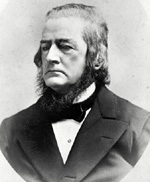
Hugh Huger Toland
The UCSF Library has launched a new website, A History of UCSF, celebrating the rich heritage of UCSF, from its origins in early San Francisco to its place today at the forefront of life sciences technology, research, education and health care.
Funded by the Office of Executive Vice Chancellor and Provost Eugene Washington, MD, the website has been a collaboration of the UCSF Library and Center for Knowledge Management, the schools of dentistry, medicine, nursing, and pharmacy, the Graduate Division and UCSF Medical Center. Content was written by faculty in the Department of Anthropology, History and Social Medicine.
The website presents the development of UCSF through 1958, covering all schools and divisions. Content through 1989 and a brief overview of more recent events will be added over the summer.
The site includes a chronological history, photographs and individual essays on important figures, buildings and special topics.
The photo section features portraits of UCSF pioneers, such as Chauncey Leake, Herbert Moffitt and Guy Millberry, as well as interesting images of the early days of teaching, research and health care. One photo, dating circa 1870, shows medical students in a dissecting room in Toland Medical College.
The special topics section includes infamous stories such as the “Sponge Case,” written by Joseph LaDou, MD. The story describes how in 1856, surgeon Hugh Toland was called to treat James King of William, the editor of the Daily Evening Express, who was shot in the chest by an assassin. Against the objection of physician R. Beverly Cole, a sponge was used to treat King, who died five years later. The death set up a malpractice trial with Toland and Cole at odds in the case.
“Toland's opinion prevailed, supported by autopsy findings that the death was caused by post-traumatic inflammation in the chest and veins. The San Francisco Herald concluded in its columns that James King of William was frightened to death by his doctors,” LaDou reports on the website.
Another special topic is the tale of Ishi, one of the last remaining Yahi Indians, who was born around 1860, and who walked out of the wilderness in Butte County into Oroville in August 1911 to join civilization. Ishi, who befriended faculty and staff, came to live at the Parnassus campus.
For more information, visit A History of UCSF.

